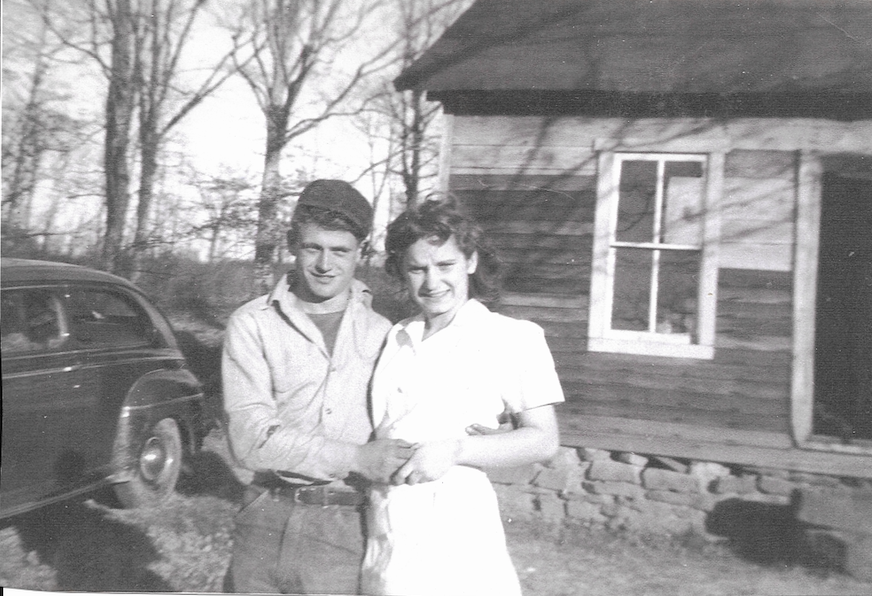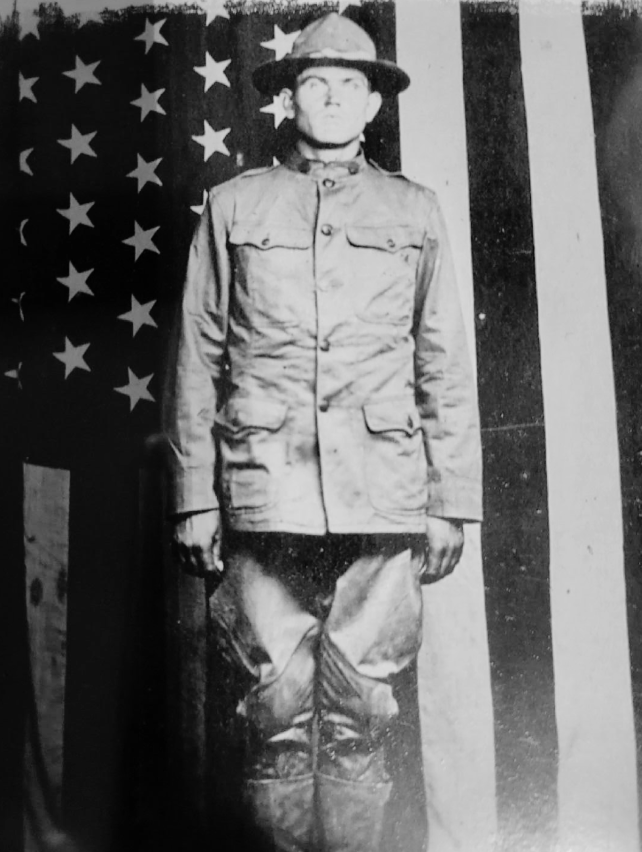
History and Heritage
Our Heritage. Your Future.
The Wyman Family Story & The Legacy of Wyman Properties LLC
"Nearly a millennium of boldness and vigilance — and we’re just getting started."
The Wyman Name: Bold and Watchful Since the Beginning
The Wyman name carries nearly a thousand years of history. Its roots are found in the Old English Wīgmund—forged from two Saxon words: wīg (“war”) and mund (“protection”). Together, they mean “protector in war” or “battle guardian.” In medieval England, this was not just a label, but a declaration of duty.
The name appears in early records as Wiman, Wymond, Wimond, Wymant, and other variants. Over the centuries, its bearers adapted the spelling to suit the times and regions, yet the meaning endured. In parts of England, it may also have Norse influence from Vigmundr, a warrior’s name carried into the Danelaw by Scandinavian settlers.
“Boldness and vigilance were not abstract ideals; they were expectations of anyone carrying the name.”
From Way-Man to Weinmann
Long before the name was spelled “Wyman,” our ancestors were known as “Way-men” — guides who led others to safety through battlefields and dangerous or unfamiliar territory.
This calling required local knowledge, courage under threat, and a deep sense of responsibility.
By the late medieval period, part of the family line had moved into German speaking lands, adopting the name Weinmann in Baden-Württemberg. Generations lived in Sielmingen, Esslingen, and Oberöwisheim, working the land, raising families, and preserving their heritage.
From Johannes Weinmann-Briem (b. 1495) to Jacob Weinmann-Zörch (d. 1755), the family line remained rooted in Germany for more than two centuries. These were people of discipline, faith, and skill, qualities that would carry across continents.
Across the Channel: The Wymans in England
Between the 1500s and early 1600s, a branch of the family migrated to the British Isles, where the spelling “Wyman” became fixed. Towns such as Wymondham in Leicestershire and Norfolk preserve the memory of early bearers of the name, associated with Saxon lords such as Wymand, son of King Witlaf of Mercia. In Hertfordshire, parish records note Francis Wymant marrying Elizabeth Richardson in West Mill in 1617. Surviving registers record the births, marriages, and lives of their descendants. The family’s English life was tied to agriculture, community, and stewardship of the land.
Arms of the Wyman Family
Some Wymans rest in the churchyards of Little Hormead Bury and Braughing parish, just two miles from Stonebury. Their coat of arms, authenticated in Washburn’s Family Crests, bears a rooster standing atop a sheaf of wheat, flanked by three fireballs, with the motto Audax et Vigilans (“Bold and Watchful”). Tradition holds it was granted for valor in war.
The name’s Saxon origin reflects the traits of those early forebears: honor-bound, protective of the vulnerable, and notably progressive in respect for women’s rights. From Alfred the Great onward, Saxon influence helped shape England’s chivalry, civic life, and steady march toward civilization—qualities that would echo through the Wyman line for centuries. (Foregoing is chiefly quoted or digested from ''Some Account of the Wyman Genealogy and Wyman Families in Herts County," 1897, by Horace Wyman)
A New World: Wymans in America
By the late 1600s and early 1700s, Wymans had arrived in the American colonies, settling first along the East Coast in communities that would become part of New England and the Mid-Atlantic. There, they engaged in farming, trade, and local governance, contributing to the growth of colonial society.
Some branches came directly from England, while others came from Germany via the British Isles. One branch from Oberöwisheim, Baden-Württemberg, arrived during this era and, by the mid-1700s, was firmly established in the colonies. By 1792, Peter Christian Wyman had moved westward, settling in Kentucky, part of the nation’s early frontier. The Wyman family quickly became part of the American story, farming, trading, serving in militias, and building frontier communities.
A Family of Service
Revolutionary War
Historical records list multiple Wyman men serving in the Continental Army and local militias, reflecting a long tradition of defending freedom.
The Francis Wyman House in Burlington, Massachusetts, built in 1666 by brothers Francis and John Wyman, served as a garrison during King Philip’s War and the Revolution. Tradition links it to April 19, 1775, when John Hancock and Samuel Adams may have passed nearby en route to the Battles of Lexington and Concord, a path now honored by a commemorative walk.
Though sold in the 1700s, Wyman descendants fought for independence, and in 1902, the Francis Wyman Association began preserving the home as a symbol of the family’s colonial and military legacy.
Civil War — Colonel John B. Wyman
Civil War
In the 1860s, Wymans served in Union regiments, particularly from Indiana, Kentucky, and Illinois. Many took part in major campaigns that shaped the outcome of the war, standing for the preservation of the Union and the principles it represented.
Among them was Colonel John B. Wyman, a self-made man whose career spanned from railroad superintendent to mayor of Amboy, Illinois. A seasoned militia leader, he commanded the elite “Chicago Light Guards” before the war. His blend of business, political, and military skills made him a natural regimental commander. Posted to Rolla, Missouri, Wyman earned a reputation for capable leadership and administration.
World War I — Elmer Wyman
Elmer Wyman (b. 1888, Indiana) embodied the grit, endurance, and work ethic that defined the family. Before donning a uniform, he worked the land as a farmer and laborer, developing the discipline that would carry him through war. Called to serve in World War I, he upheld the family’s tradition, standing shoulder to shoulder with fellow soldiers in defense of liberty.
After the war, Elmer returned to farming, tending the soil with the same care and commitment he had shown in uniform. He later joined the Crane Naval Facility in southern Indiana — a vital U.S. defense installation supporting munitions production and weapons systems.
Elmer married Emmaline Florence Lewis (b. April 21, 1887, Chicago, IL – d. September 7, 1963, French Lick, IN), and together they raised fourteen children in French Lick, Indiana. Their home was grounded in faith, hard work, and service. Whether in the fields, in his home, or in the workshops of a military base, Elmer’s life reflected a quiet strength: steady hands, steadfast service, and an unshakable sense of duty.
Crane Naval Facility & The Wyman Sons
Elmer’s sons — James, Herbert, Clarence, Donald, and Carl — followed in their father’s footsteps, serving at Crane Naval Facility. From the WWII years into the height of the Cold War, they played essential roles in America’s defense, applying their skills in technical, logistical, and maintenance work to keep vital munitions and weapons systems operational.
Crane was more than a workplace — it was a proving ground where the Wyman work ethic, discipline, and attention to detail found daily application in service to the nation. For decades, their combined efforts formed an unbroken chain of contribution, each brother reinforcing the legacy handed down by Elmer.
“For the Wyman family, service has never been an exception — it is the tradition.”
The Wyman Family Crest and Motto
The Wyman family crest is a striking emblem: a rooster, combed, wattled, and spurred, standing atop a sheaf of wheat, flanked by three fireballs on a silver shield with a black horizontal band (fesse).
The Rooster — In Christian tradition, a symbol of vigilance and repentance (Peter’s denial and restoration).
The Sheaf of Wheat — Provision, stewardship, and the fruits of labor.
The Fireballs — Readiness for defense, boldness in adversity.
The Silver Field — Purity of life and intent.
The Black Fesse — Mourning for those lost in war.
The Crest’s Motto, Audax et Vigilans — “Bold and Watchful”
The crest’s motto, Audax et Vigilans — “Bold and Watchful” — echoes the family’s ancient role as both protectors and providers, standing ready in peace and in conflict alike.
For generations, this emblem has served as both a rallying point and a moral compass for the Wyman line.
Whether carried into battle, displayed in the home, or quietly remembered in the telling of family stories, it binds together centuries of shared values: courage in the face of danger, diligence in labor, and faithfulness to one’s word.
Its imagery speaks to both the martial readiness of soldiers and the patient endurance of farmers, a dual heritage the Wymans have embodied from Saxon England to the American frontier.
In modern times, the crest remains more than a relic of the past; it is a living reminder of responsibility.
For the Wymans, bearing the rooster, wheat, and fireballs is not merely about honoring ancestry; it is about upholding the standards those symbols demand.
Each generation is called to remain “Bold and Watchful,” guarding what has been entrusted to them and building upon it for the future.
Indiana Roots and Community Leadership
By the early 1800s, the Wyman family had deep roots in Indiana. Lewis Wiman Wyman Sr. (b. 1774, Somerset, Pennsylvania) moved from Pennsylvania to Crawford County, Indiana, where generations farmed and served their communities. William Grant Wyman (b. 1848) and his descendants lived in Orange County, French Lick, and nearby towns.
Through economic hardships, two world wars, and changing times, the Wymans adapted — working the land, running small businesses, and maintaining strong civic ties.
Carl Wyman: Service in Community
Carl Paul Wyman (1930–2017), the 13th of Elmer’s 14 children, embodied the family’s ethic of service in both national defense and everyday life. Following his father, Carl worked at the Crane Naval Facility, supporting critical defense missions during an era of rapid technological advancement.
After his time at Crane, Carl served as a city carrier for the United States Postal Service. For decades, he was a familiar figure on his route, known for reliability, kindness, and a dedication that went beyond delivering mail.
In 1950 Carl married Frieda Mae Wyman Shartzer (1932–2022), whose steady presence and commitment to family life shaped generations. Together, they raised three children: David Wyman, Elaine Wyman, and Yvonne Wyman. David served in the U.S. Marine Corps, continuing the Wyman tradition of military service.
“Carl’s life was a reminder that service is not always about rank or title — sometimes it’s about showing up every day, rain or shine, for the people who depend on you.”
From Heritage to Enterprise
The same principles that guided Wyman's ancestors across continents and through centuries- service, stewardship, vigilance, and boldness — inspired the creation of Wyman Properties LLC in 2015.
What began as a focus on acquiring and managing single-family rental homes soon grew into a multi-state investment firm with holdings in Texas, Indiana, Alabama, and New Mexico. The approach remained hands-on, with leadership engaged directly with clients and communities.
“Every property is more than an asset — it is a chapter in someone’s story.”
History Section Sources:
Parish records of West Mill, Hertfordshire (1617 marriage of Francis Wymant & Elizabeth Richardson)
Domesday Book references to Wymondham, Great Wymondley, Little Wymondley
Sielmingen, Esslingen, Baden-Württemberg genealogical records (Weinmann family, 1495–1755)
U.S. census and military records (1774–1976, Indiana & Kentucky)
NSA Crane official history, U.S. Navy
Patronymica Britannica by Mark Antony Lower
Oral family history, Wyman family archives





























